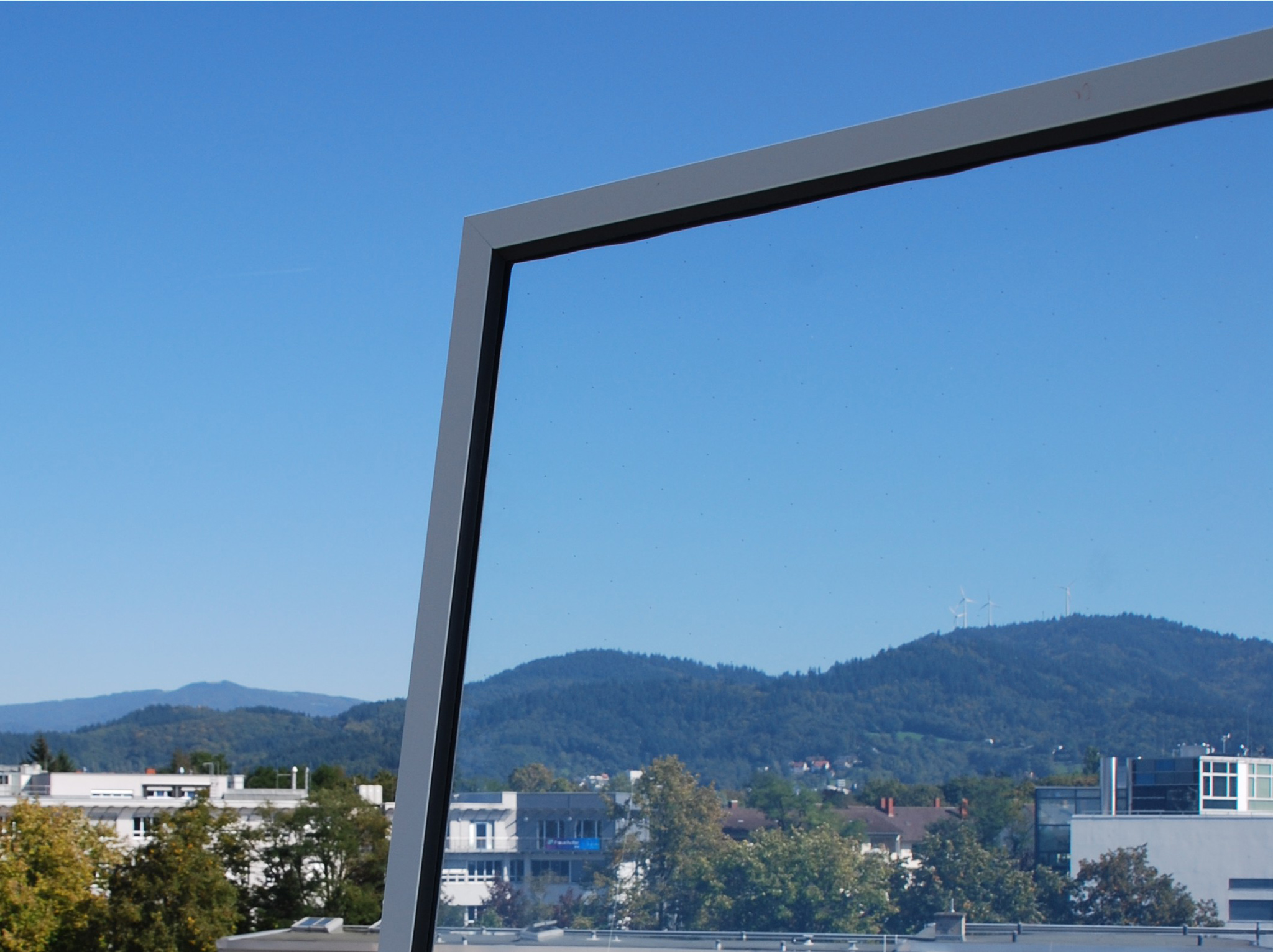| Duration: | January 2013 - December 2014 |
| Contracting Authority/ Sponsors: | German Federal Ministry of Economic Affairs and Energy (BMWi) |
| Project Partners: | ZAE Bayern, Fraunhofer Institute for Mechanics of Materials IWM Freiburg |
| Website: | www.vig-info.de |
VIG-S – Evacuated Insulating Glazing Units: Windows with Very Low U Values

Windows still represent a weak point in the thermal insulation of a building. For this reason, quadruple glazing is already being installed in Scandinavia. As the number of panes increases, so does the weight and the thickness (> 40 mm) of the windows. An alternative is presented by evacuated insulating glazing, consisting of a hermetically sealed unit of two glass panes separated by an evacuated gap. The thermally insulating properties of evacuated glazing systems are comparable to those of quadruple glazing (Ug ≤ 0.5 Wm-2K-1). The evacuated glazing was constructed with hermetic and flexible edge seals, uniting two areas of expertise at Fraunhofer ISE, the vacuum laser-welding process and coating of the individual components.
The goal of the ”VIG-S“ project is to develop processes for the production of evacuated insulating glazing units. All the necessary process steps have been investigated and optimized. The target Ug value of 0.5 Wm-2K-1 can only be achieved if a maximum pressure of < 1 x 10-3 mbar can be maintained. This demands a hermetic and flexible edge seal, which not only guarantees air tightness throughout the entire service life but also withstands movement due to thermal expansion of the glass panes. Implementing this edge seal presents the greatest challenge and is thus the main topic of this project. The edge seal is created by an adapted glass / metal bond. Glass and metal substrates are sputter-coated with a thin-film stack, onto which soft solder is applied. Each pane of glass forms half of an evacuated glazing unit. Two panes are then transformed into a complete evacuated glazing unit by a laser-welding process in vacuum. In order to prevent mechanical contact between the two glass panes due to atmospheric pressure, spacers are introduced into the cavity before the laser-welding process. The size, form and distribution of the spacers are chosen such that they hardly have any visual impact on the finished product (Fig. 1).